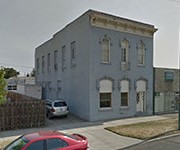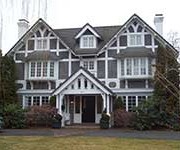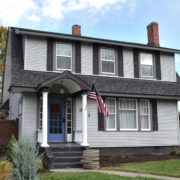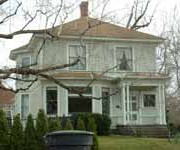History of 77 Wainwright Drive, Walla Walla – Jonathan M. Wainwright Memorial VA Medical Center
![77_Wainwright[1]](https://ww2020.net/wp-content/uploads/77_Wainwright1.jpg)
WALLA WALLA’S VA: THROUGH THE AGES
Walla Walla Union-Bulletin – October 9, 2005
Some buildings at Walla Walla’s VA Medical Center are old as adobe dirt. The grounds originally were a military fort – one of the earliest, but not the first.
Although not officially a hospital until the early 1920s, much of the history of the Walla Walla VA precedes Walla Walla itself.
Semblances of forts in the area date to 1818, when the Northwest Company built a trading post for trappers at the confluence of the Columbia and Walla Walla rivers.
Two others replaced it until Fort Walla Walla – as it was known in later years – was abandoned because of Indian uprisings in 1855.
To provide a military escort for treaty negotiations, a temporary camp was built in September 1856 along what now is Five Mile Road south of Mill Creek.
That was the first Fort Walla Walla, according to Robert “Steve” Stevenson, a former Medical Center employee and historian.
A month later, the fort was moved to the present Main Street in downtown Walla Walla. The southern side of the compound stretched from the current First Avenue to about Palouse Street.
Included were barracks, stables, officers’ quarters and various sheds.
As a deterrent to Indian uprisings, additional soldiers arrived the following year and camped on a hill southwest of downtown. The next spring, the fort was moved to that final location – which would become the site of the VA Medical Center decades later.
The original 1858 buildings were made of adobe brick. A sawmill was added later to mill lumber from the Blue Mountains for construction.
Five of the 1858 officers’ quarters, four of which are duplexes, remain today. The buildings were painted white after wood was laid over the adobe shortly after they were built.
The buildings are adjacent to the southern edge of the central parade grounds, where mounted cavalry soldiers would drill. Barracks were built on the north side of the grounds.
Other structures erected then or added over the years include stables, a blacksmith’s shop, granary, ordinance storehouse and sheds.
A total of 15 of the fort-era buildings and two off the present site exist today.
The 9th Infantry soldiers were stationed at the fort to suppress uprisings among Native Americans. Many troops who were killed are buried at the fort’s cemetery at nearby Fort Walla Walla Park.
All but a small detachment were withdrawn after 1865, following the Civil War. According to an account provided by the medical center, “Congress tried to abandon the fort in 1867, but listed the post in Oregon rather than Washington. By the time the error was discovered, the Modoc tribe was warring in southern Oregon, and the fort was regarrisoned with troops from the 21st Infantry Regiment. The fort remained in use for the next 37 years.”Although it officially closed on Sept. 28, 1910, some troops trained there during the early part of World War I.
The grounds – which were transferred to jurisdiction under the Department of the Interior – also were used temporarily to house patients from St. Mary Hospital after the facility was destroyed by fire in 1915. The former fort also was home to the public health service medical facility.
A new hospital in townVeterans hospitals to care for wounded soldiers sprouted up throughout the country after World War I.
Walla Walla’s Commercial Club came up with the idea of converting the old fort into such a facility, supported by John W. Summers, an influential U.S. Congress member from Walla Walla, a bill authorizing the Walla Walla hospital was signed on March 4, 1921.
The grounds were transferred to the Bureau of Public Health, then to the U.S. Veterans Bureau.
“The buildings were converted for hospital use during the winter of 1921-’22; a task complicated by severe weather,” according to the VA’s historical account.
“Despite the difficulties, the staff accepted their first patients on May 10, 1922.”In the early years, the hospital primarily was a tuberculosis treatment facility.
The government added structures in the 1920s and early ’30s, including a new administration building, main hospital building and recreation building.
During World War II, wounded, active duty soldiers were treated at an adjacent hospital – the largest and most short-lived of any in Walla Walla’s history.
McCaw Hospital was built in 1942 and started accepting patients early the following year. Spread out over 189 acres in the area of what now is the Poplar Street extension, the complex consisted of 88 buildings and averaged about 1,000 employees.
McCaw ultimately was enlarged to 1,850 beds and treated an estimated 16,000 patients until closing in November 1945. Existing patients were transferred to other facilities and the buildings were moved to other areas of town.
The VA hospital initially had a capacity for 250 tuberculosis patients, which reached 500 and was a busy place, according to Stevenson. “It was a very populated facility,” he said. But as antibiotics were developed in the 1940s and ’50s, the need for inpatient treatment subsided.
The facility was designated a General Medical and Surgical Hospital in July 1959.
Stevenson doesn’t know how many patients initially were hospitalized, but said the number of inpatient beds started decreasing in the late 1950s.
By 1979 when Stevenson came to the VA as director of voluntary service and public relations, the hospital was designated as a 150-bed facility. He remembers about 120 or 130 beds in use at any one time, with patients on all three floors of the main building.
The hospital offered surgical services and an operating room, employing two staff surgeons.
“But we closed the surgical facility there in the early to mid-1990s because we weren’t doing enough procedures there to justify the surgical service,” he said.
Although audiology and optometric services were added in the late 1980s and ’90s, the facility continued to lose full-time patients.
“Other things dwindled away because of the changes in the provision of health care,” said Stevenson, who retired in 2001. “You don’t need to be hospitalized for the things you once needed to be hospitalized for. It’s just a progressive thing. “Because of the progression to more outpatient care, the clinic was remodeled in the early 1990s, according to Stevenson. “We greatly expanded our facility for ambulatory services,” he said.
The hospital now provides medical care for nearly 13,000 veterans a year in the hospital’s 42,000-square-mile service area spanning Washington, Oregon and Idaho.
The hospital also has attained designation for 30 nursing home beds, now located in the main hospital building. Six acute-care beds remain, in addition to nine for psychiatric patients and 22 in residential programs, such as substance abuse.
Currently, 27 buildings used for food service, support services, engineering, warehouse, laundry, chapel and storage comprise the hospital grounds. About 322 full-time workers and 43 part-time workers are employed. The facility operates with an annual budget of $35 million.
Attempts to dismantle the hospital have been thwarted by political clout – so far. In 1987, U.S. Rep. Tom Foley led a successful fight against downgrading the center from full-service status. Also, U.S. Sen. Patty Murray, D-Wash., and former U.S. Rep. George Nethercutt, R-Wash., last year helped convince the VA to study further a controversial proposal to contract out many services.
It took an act of Congress to change the hospital’s name in 1996. Dubbed the Jonathan M. Wainwright Memorial VA Medical Center, the facility now honors the World War II Medal of Honor winner who was born at the fort on Aug. 23, 1883.
Although placed on the National Register of Historic Places in 1974, many of the old buildings need of paint, new roofs and other repair.
Officers’ quarters have been added to the Most Endangered Historic Properties list. The buildings once were rented to hospital personnel, but now are vacant.










